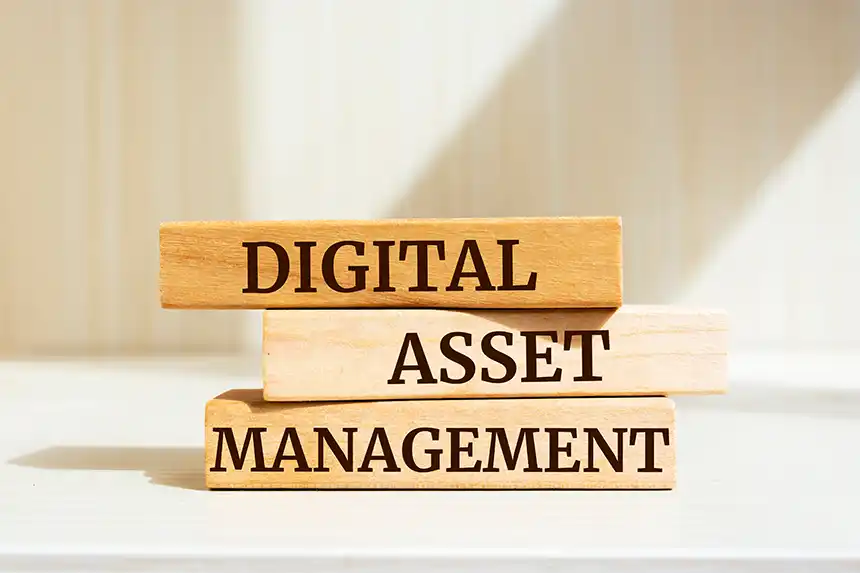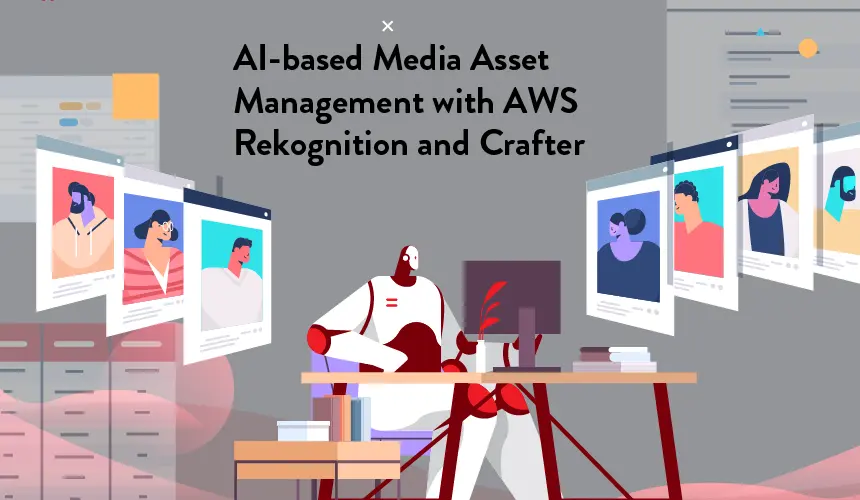Basic Digital Asset Management with a Headless CMS

Amanda Jones

Any enterprise organization with a digital marketing strategy likely has to manage several assets. As customers demand more in-depth personalization and omnichannel experiences, businesses need to generate several assets to keep up.
However, even with an increasing number of assets to manage, most organizations don’t need the sophisticated asset management capabilities of a dedicated digital asset management (DAM) solution. Instead, they can achieve their goals with a modern headless CMS that has strong content management capabilities.
What Is a Digital Asset?
A digital asset refers to any digital content or material owned and used by an organization or individual. It typically includes images, videos, design assets, documents, and other media files.
These assets are used across various platforms and campaigns, including websites, social media, ecommerce shops, and other channels to help convey information and promote products.
What Is Digital Asset Management?
Digital asset management (DAM) refers to the systems and processes used by businesses to store, organize, retrieve, and distribute their digital assets. A DAM system centralizes these assets into a single repository, allowing everyone in the organization, from employees to clients, contractors, and other stakeholders, to easily access the most up-to-date assets.
With a DAM system, internal teams have a tool to search for and more easily locate the right assets for multiple use cases while maintaining the proper permissions and access rights.
Benefits of Digital Asset Management
Proper digital asset management can yield several benefits.
- Centralized Hub: A DAM system is a single source of truth for all digital assets. This gives internal stakeholders a way to easily find and access assets and helps to ensure version control with the most up-to-date versions. Additionally, this reduces the likelihood of content duplication.
- Brand Consistency: Centralizing assets that follow approved brand guidelines makes it easier for teams to ensure consistency across channels. Businesses can maintain a cohesive brand image regardless of who accesses the assets or where they are distributed.
- Content and Asset Governance: Proper content governance provides the systems and workflows to ensure a content strategy succeeds. With a DAM system, organizations can introduce permissions and usage rights, as well as version control, to ensure that only the right persons have access to content and the correct assets are used in ideal situations.
- Improved Productivity: Digital asset management reduces the time spent searching for assets or waiting for approvals. This frees up teams to focus on high-value marketing tasks while enabling a faster time to market and improving collaboration, all of which improve productivity.
What to Look For In a Digital Asset Management Solution
Although most organizations only need simple digital asset management, given the benefits that can be achieved they must select a solution that can sufficiently meet their needs. These are the characteristics to look for in a DAM system:
- Storage: A DAM system must offer ample storage capacity to accommodate a growing digital asset collection, whether these assets include high-resolution images and videos or design files and marketing materials. The platform should also be scalable to meet future needs and provide fast access to stored assets.
- Version Control: Version control ensures that marketing teams are working with the most current and approved versions of assets. Proper version control also means that the DAM system can track updates and edits, maintain a history of changes, and enable easy rollbacks if needed.
- Workflows: Digital assets don’t remain stationary for long. Workflows in a DAM system allow teams to manage the asset lifecycle from creation and approval to distribution and archival. A proper workflow system also streamlines processes like content approval so that the right people sign off on assets before they’re used.
- Security: A robust DAM must include security features such as encryption, role-based access control, and permission settings. These features ensure assets are protected from unauthorized access and enable enterprises to comply with strict data protection regulations.
- Basic Metadata: Offering basic metadata features like the ability to asset titles, descriptions, tags, and creation dates, ensures assets are easy to find and organize. Accurate metadata enhances discoverability and categorization, saving time and reducing the chances of misplacing or underutilizing valuable content.
Use Cases For Advanced DAM Solutions
Although most enterprises only need a simple DAM solution, some use cases require integration with specialized digital asset management software.
- Retail Companies: Online retailers (both B2B and B2C) with thousands or hundreds of thousands of SKUs and products need the added capabilities of dedicated DAM software to manage their digital assets.
- Global Organizations: Global enterprises often need a dedicated enterprise DAM system capable of managing assets in multiple languages and regions and high volumes of content to cater to those multiple audiences, especially those running global websites, large corporate intranets, enterprise video solutions, and more.
- Media Companies: Media and entertainment companies that produce and manage vast amounts of rich media (videos, audio, graphics) and need to extract detailed data from these assets need an advanced DAM solution.
How CrafterCMS Serves Digital Asset Management Needs
CrafterCMS is a headless content platform for the enterprise that can cater to any enterprise’s digital asset management needs. CrafterCMS offers built-in capabilities that can meet the basic digital asset management requirements that most organizations have. This includes storing, managing and publishing assets such as images, videos, and other rich media.
Strong Content Management Capabilities
CrafterCMS is, first and foremost, an enterprise-grade CMS, so it offers the content management capabilities that organizations need for their digital assets. This includes best-in-class content authoring tools like Crafter Studio, which provides drag-and-drop editing, multi-channel preview, and more.
Developers have the flexibility to create digital experiences using their preferred frameworks, and content can be distributed and published to any channel thanks to CrafterCMS’s headless architecture.
Content Modeling
CrafterCMS’s content modeling features enable you to tailor your content structure and metadata to fit any requirement, whether for complex global websites, innovative digital experiences, or simple microsites and landing pages.
Content Versioning
CrafterCMS tracks changes to pages, content, and static assets, allowing you to view or compare different versions. If needed, changes can easily be reverted to a previous version.
Workflows & Permissions
CrafterCMS offers advanced workflows and security permissions that allow content teams to track approvals and ensure only the right personnel have access to digital assets.
Integrating Advanced DAM Systems
For organizations that need more advanced DAM functionality, CrafterCMS can handle content management and integrate with leading specialized DAM solutions. The CrafterCMS Marketplace also provides over 60 plugins, add-ons, and solution blueprints to simplify and enhance end-user sites and applications.
Try out CrafterCMS today to see how it can meet your content and digital asset management needs.
Related Posts

Websites Are Dead?

Mike Vertal

No-Code Experience Building for Marketers & Designers

Amanda Lee

Is Your CMS MACH-Ready? A Practical Guide for Enterprise Architects

Sara Williams

Composable DXP vs Traditional DXP: Why Enterprises Choose CrafterCMS

Amanda Jones
Related Resources
-

CrafterCMS at eBay: The Universal Content Platform for eBay.com
Webcast
-

Personalized Digital Experiences for a Cruise Liner
Webcast
-

Introducing CrafterCMS v4.0
Webcast
-

Modernizing Video Delivery and Content Management at CPAC, A Canadian Nationwide Broadcaster
Webcast
-

AI-based Media Asset Management with AWS Rekognition and CrafterCMS
Webcast





